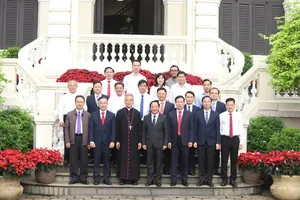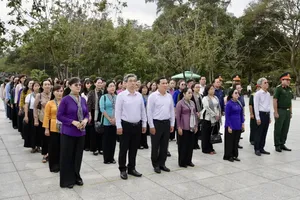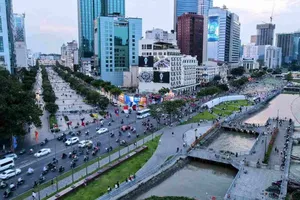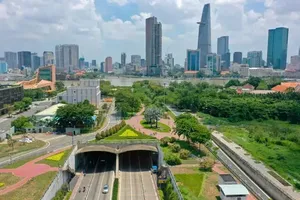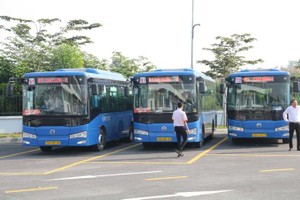Regarding to the project, Ho Chi Minh City set targets to attract investment resources for priority areas, comprising infrastructure development investment, transportation, energy infrastructure, and synchronous and modern telecommunications.
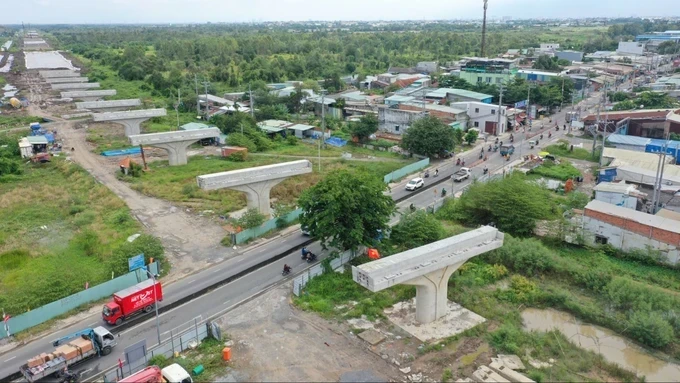
Besides, Ho Chi Minh City strives to complete the construction of national highways and the system of intra-regional and inter-regional connecting roads according to the planning; accelerate the progress of investment in the construction of national key projects, especially Ring Road No.3 and Ring Road No.4, expressways, urban railways, railways connecting regions and upgrade Tan Son Nhat International Airport.
Additionally, Ho Chi Minh City will review the mechanism to mobilize investment resources for the whole society with set targets to reach VND420,000 billion (US$16.5 billion) by 2025, VND477,000 billion (US$18.8 billion) in 2026; VND528,000 billion (US$20.8 billion) in 2027; VND584,000 billion (US$23 billion) in 2028, VND 646,000 billion (US$25.4 billion) in 2029; and VND714,000 billion (US$28.1 billion) in 2030.
Besides, the city also set a target of mobilizing annual remittances from US$6-8 billion annually. Along with that, the disbursement rate of public investment capital would reach 95 percent; and investment in science and technology of the society will reach an average of one percent per Gross Regional Domestic Product.
On the other hand, the city set a goal of calling for socialization to participate in investment projects with an average of three to five projects per year.
The People’s Committee of Ho Chi Minh City affirmed that the project mobilizing social resources for infrastructure development in the city for the period 2024 – 2030 was essential to outline orientations and solutions to manage, exploit, mobilize, allocate, use and effectively promote social resources for infrastructure development in the period 2024-2030.
Following the report from the General Statistics Office of Vietnam, the non-state capital sector accounted for the highest with 69.1 percent of the structure of social investment capital in 2022, which reached more than VND333,600 billion (US$13 billion).
Of which, organizations and enterprises accounted for the highest rate, reaching 56.5 percent of the total investment capital. The capital of the population hit 14 percent while state budget capital accounted for 13.6 percent. Foreign direct investment sector capital reached 9.9 percent and loans accounted for 0.015 percent.
While the total state budget revenue in the area was estimated to reach VND480,289 billion (US$18.9 billion) and VND448,826 billion (US$17.7 billion) in 2022 and 2023, respectively which showed that social investment capital played a particularly important role and significance to investment resources for city infrastructure development in recent years.
According to the project, by 2030, the total investment capital in infrastructure in all fields in Ho Chi Minh City will be about VND209,778 billion (US$8.3 billion).
Of which, the transport sector mobilizes investment in the form of public-private partnerships for 16 projects which is expected to reach VND69,256 billion (US$2.7 billion) while the education and training sector would call for VND24,803 billion (US$976 million), with 110 projects comprising 2,638 classrooms.
Besides, the construction sector is expected to reach VND41,127 billion (US$1.6 billion) with eight projects.
The field of culture and sports is set to reach VND28,585 billion (US$1.1 billion) with 40 projects. Of which, 21 projects have been approved by the People's Council of Ho Chi Minh City with a total expected investment of more than VND22,100 billion (US$869 million).
Additionally, the agriculture and rural development sector is set to mobilize VND3,414 billion (US$134 million) with six projects and the health sector is expected to mobilize VND42,592 billion (US$1.7 billion) with 48 projects.
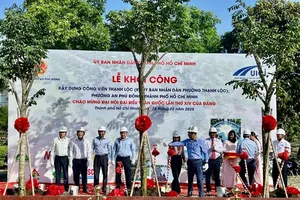

)

